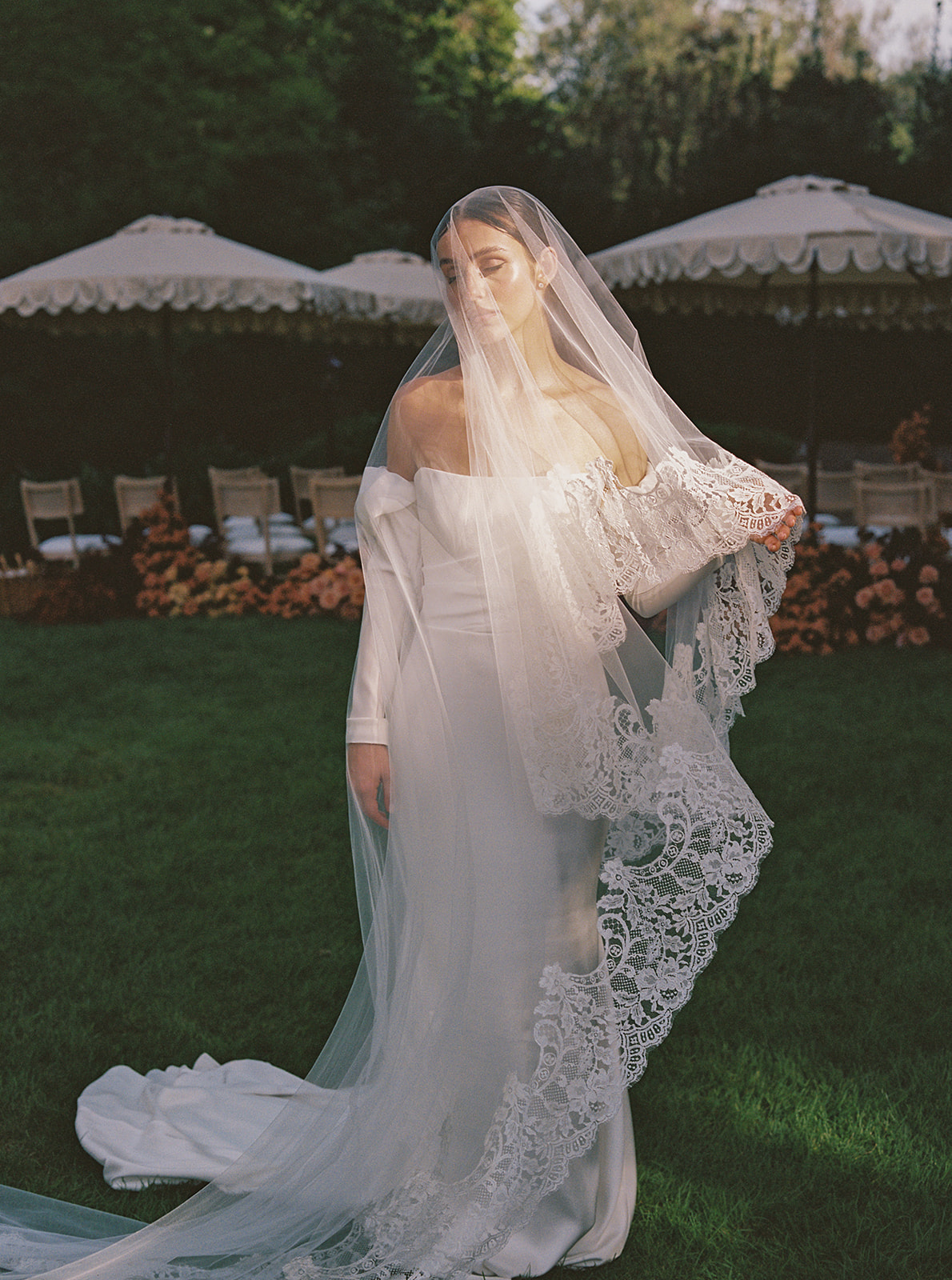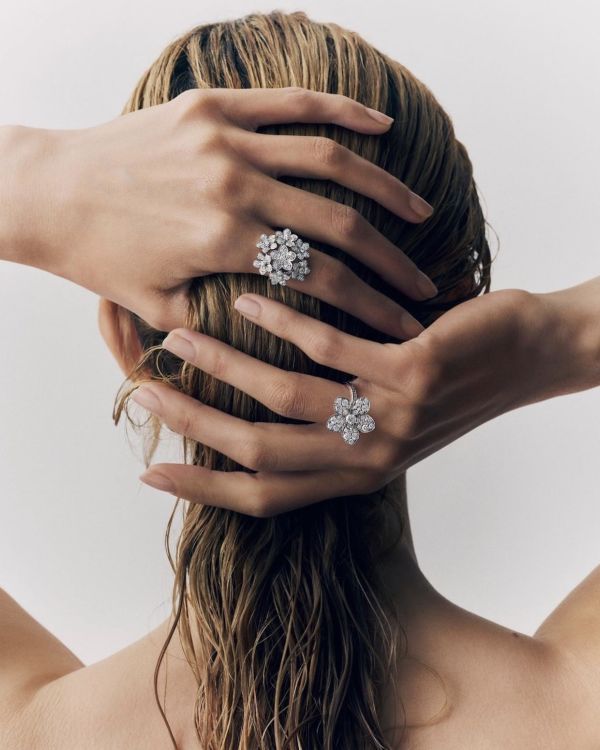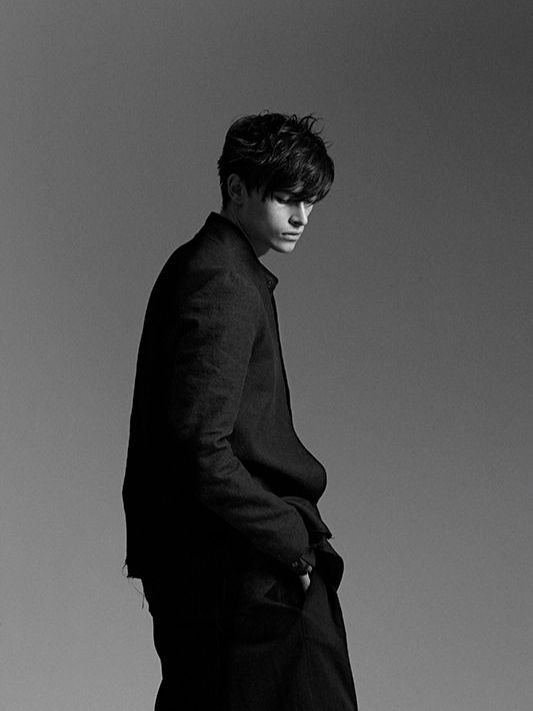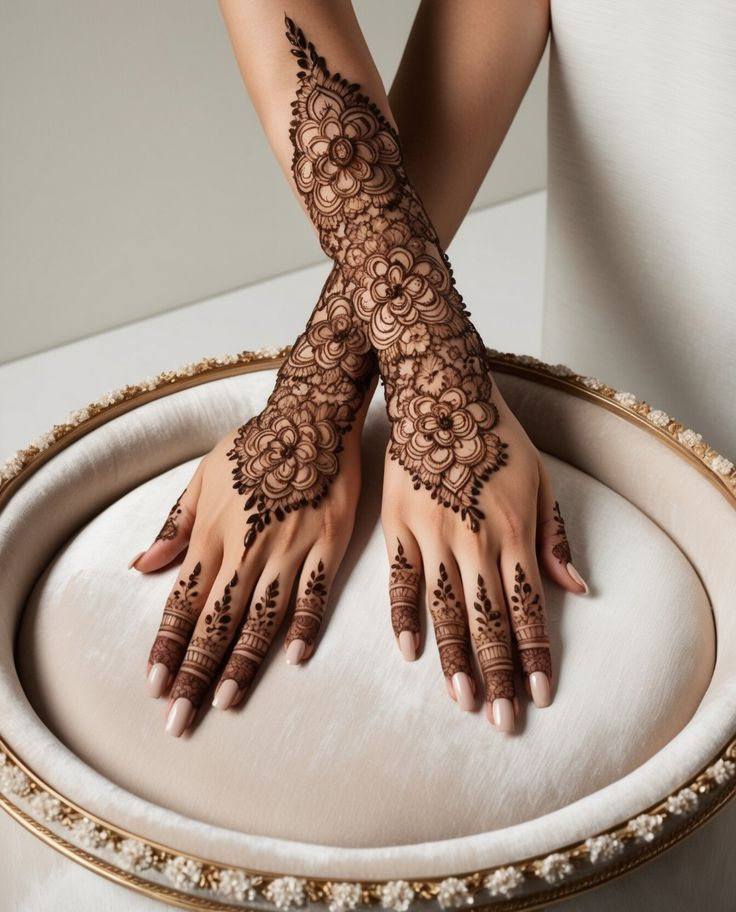16 Timeless Buddhist Wedding Rituals
- Author: Natali Grace Levine
- Reading time: 5 min 44 sec
- Publication date: 11/21/2024
- Updated: 01/07/2025
- 1. Ritual of Hand Washing
- 2. Monks’ Blessings and Sacred Markings
- 3. The Groom's Entrance in Buddhist Weddings
- 4. Traditional Women’s Dance
- 5. The Couple’s Grand Procession
- 6. Decorating the Altar with Flowers
- 7. Prayers Before Monks
- 8. The Tradition of Ring Exchange
- 9. Hand Tying with Red Thread
- 10. Traditional Bridal Attire
- 11. Blessings with Shells, Water, Beads, and Flowers
- 12. Golden Adornments for Bridesmaids
- 13. The Blessing of the Bride and Groom's Parents
- 14. The Dance of Happiness
- 15. Offering of Gifts in Buddhist Weddings
- 16. Bridesmaids' Attire
Buddhist weddings are a harmonious blend of spiritual practices, cultural traditions, and celebratory elements that bring families and communities together. Rooted in the teachings of the Buddha, these ceremonies vary across different countries but share universal themes of love, respect, and spiritual connection. In this article, we will explore 16 significant Buddhist wedding traditions, delving into their symbolism, origins, and unique roles in creating a meaningful union.

1. Ritual of Hand Washing
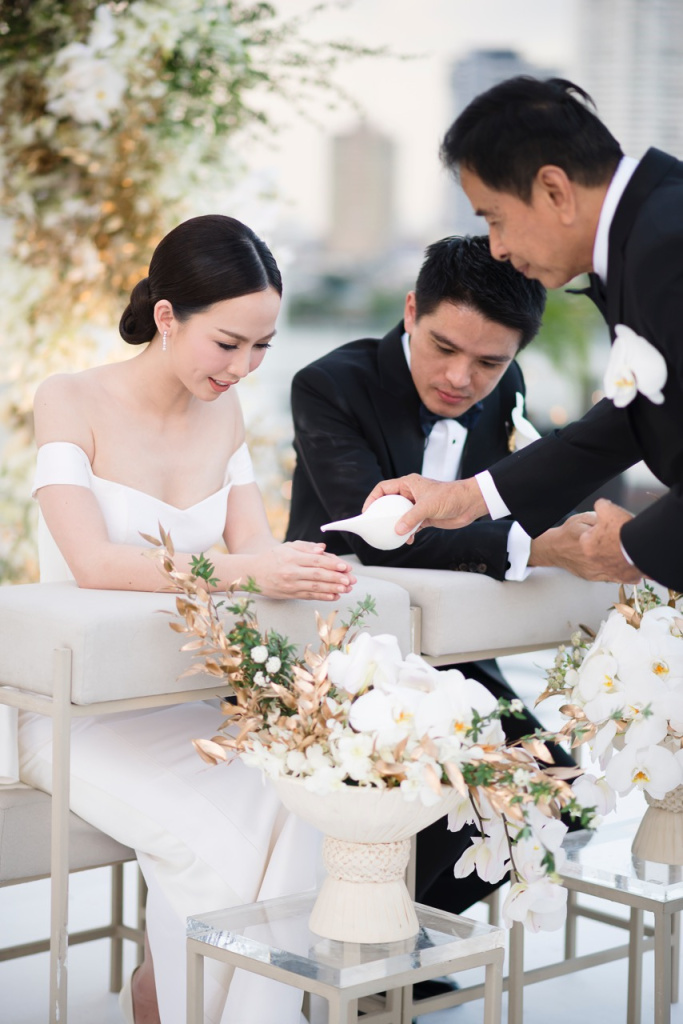
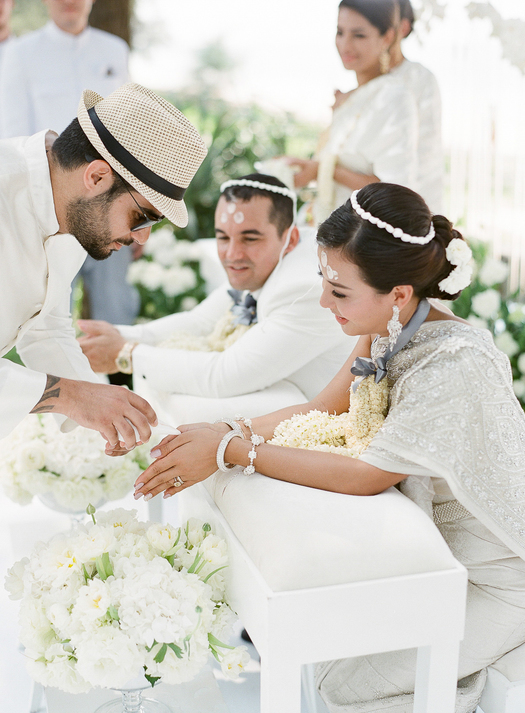
The washing of hands with sacred water is a common tradition in Buddhist weddings, especially in Thailand and Laos. During this ritual, the bride and groom hold their hands together in a prayer-like gesture while elders or guests pour water over them using a conch shell. This act signifies purification, washing away past grievances, and welcoming a fresh start as a married couple.
2. Monks’ Blessings and Sacred Markings
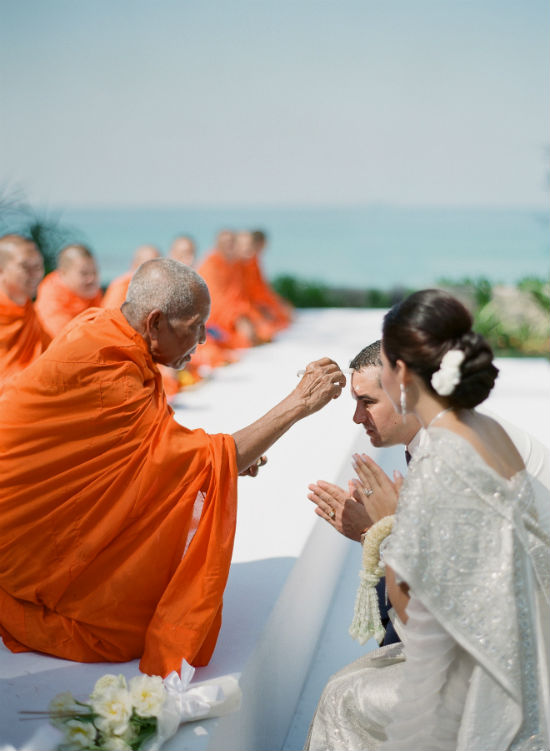
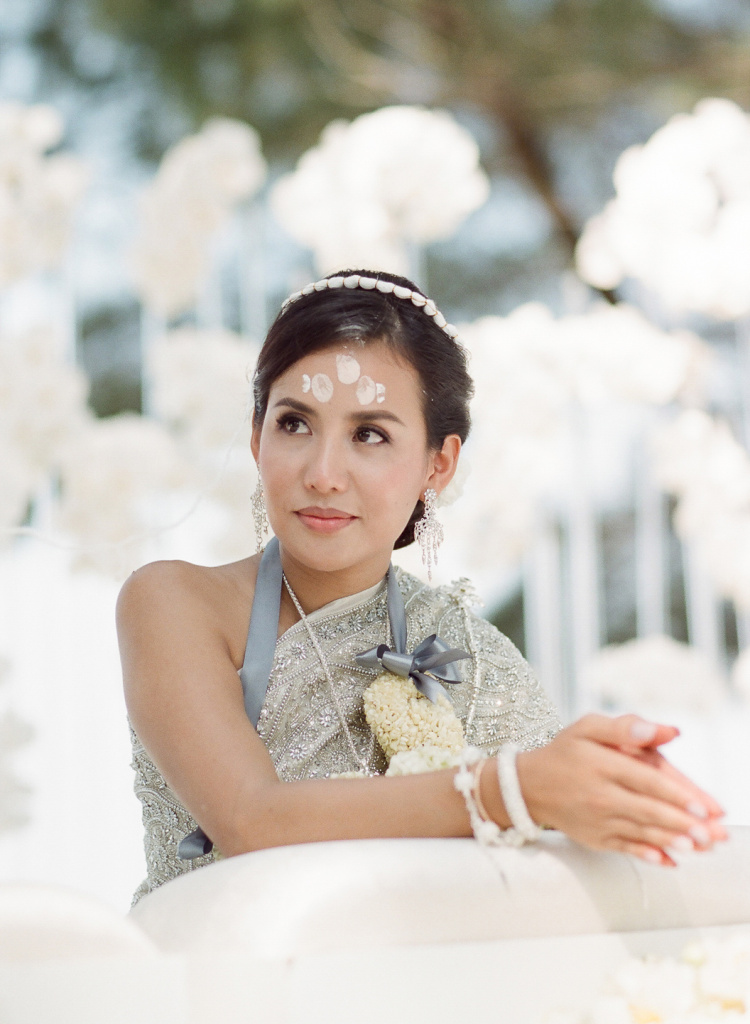
In a unique tradition, Buddhist monks bestow their blessings by drawing sacred markings on the foreheads of the bride and groom. These marks, often made with a mixture of rice paste and saffron, are believed to provide spiritual protection and guidance. This act serves as a reminder of the couple’s commitment to live by Buddhist values.
3. The Groom's Entrance in Buddhist Weddings
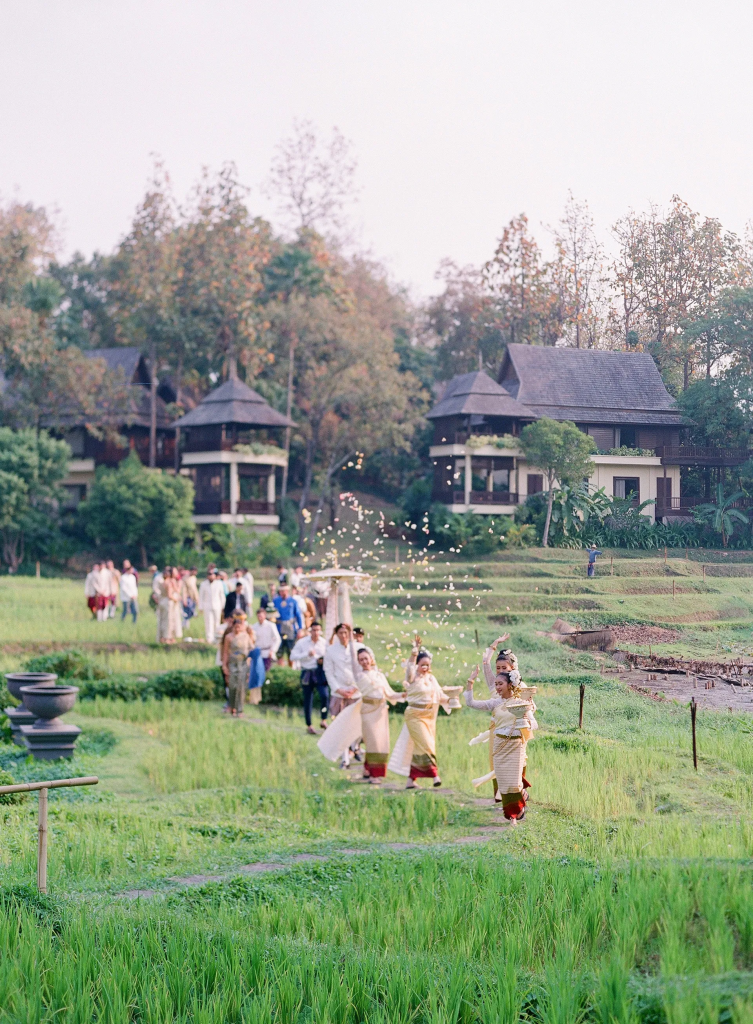
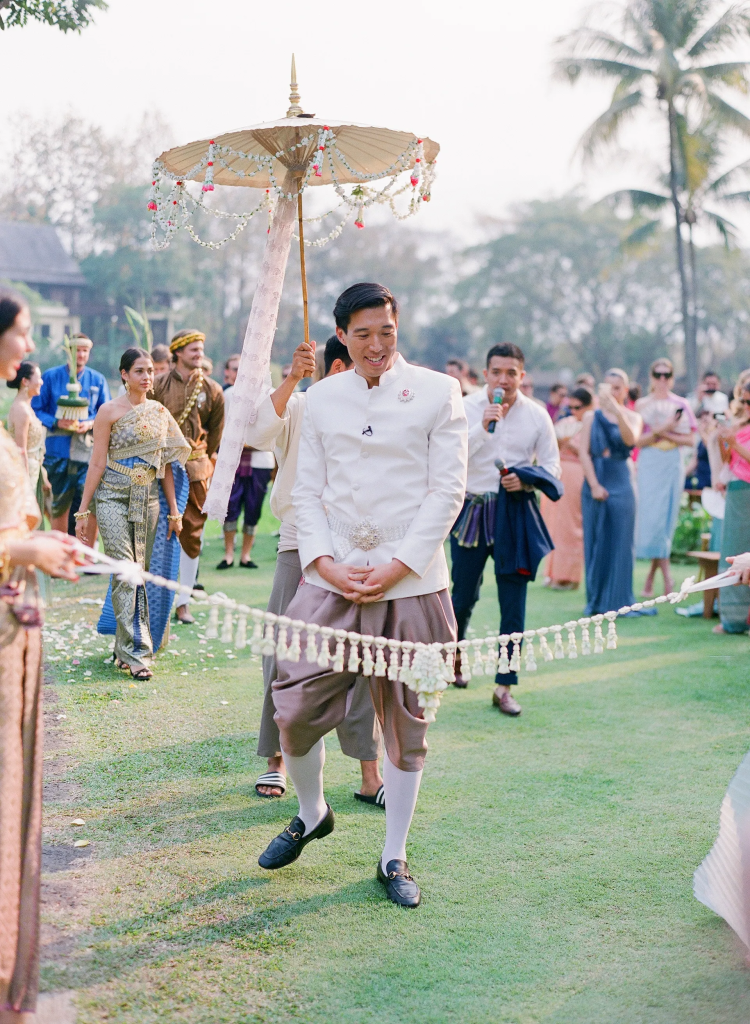
The groom's entrance in a Buddhist wedding is a moment filled with symbolic meaning, often representing the start of a new chapter in life. Traditionally, the groom may arrive at the wedding venue accompanied by family members or friends, and sometimes even with a procession of monks, depending on the cultural context. His arrival is often marked by ritual gestures, such as offerings or prayers, which seek blessings for the couple's future. In some regions, the groom may walk under a canopy or a floral arch, symbolizing his readiness to enter into a sacred union with his bride. The entrance is an important event, as it not only signifies the groom's formal commitment to the marriage but also serves as a moment of spiritual connection, where both the groom and bride seek blessings for their new life together.
4. Traditional Women’s Dance
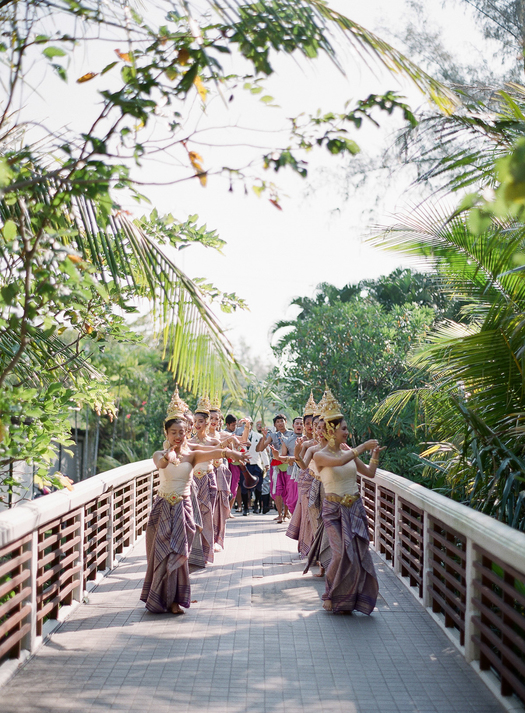
Colorful traditional dances performed by women in vibrant attire and ornate headpieces are a joyful element of Buddhist weddings. These dances, accompanied by rhythmic music, symbolize celebration, good fortune, and the blessings of the community. The performers often depict stories of love, unity, or spiritual teachings, enriching the cultural aspect of the wedding.
5. The Couple’s Grand Procession
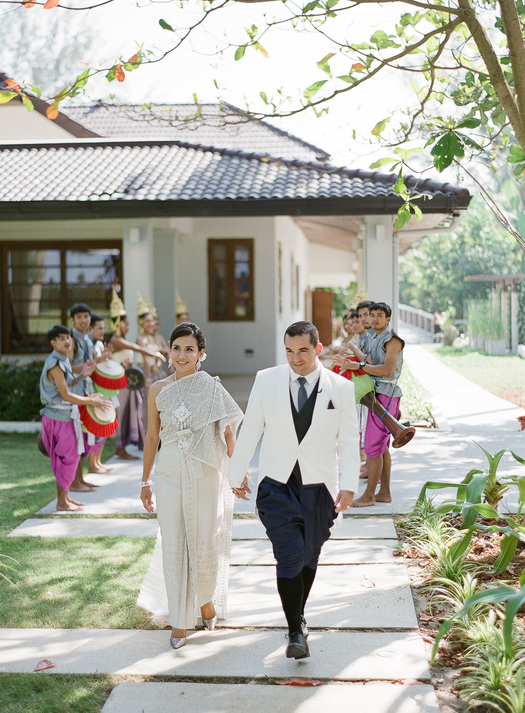
The grand procession of the bride and groom marks a pivotal moment in Buddhist weddings. Often accompanied by family, friends, and musicians playing drums or other traditional instruments, the couple makes a ceremonial entrance. This procession symbolizes the transition into a shared life and the merging of two families into one harmonious unit.
6. Decorating the Altar with Flowers
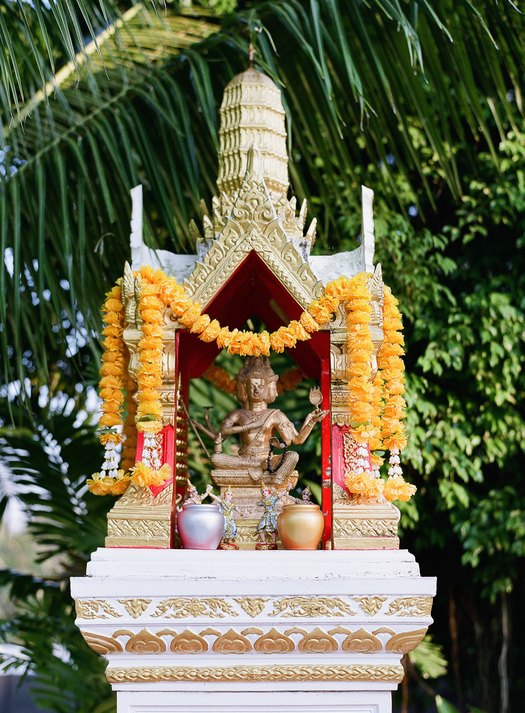
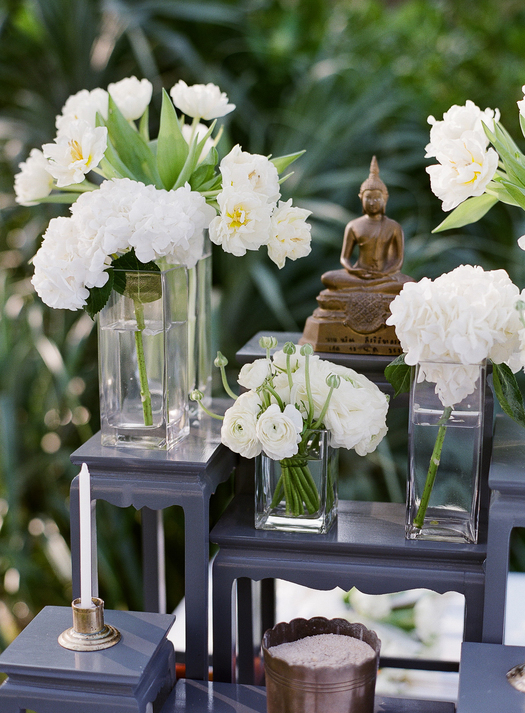
Flowers play a significant role in Buddhist ceremonies, and weddings are no exception. The altar, often adorned with an image of Buddha, is surrounded by vibrant floral arrangements. These flowers signify impermanence, beauty, and purity, reminding the couple to cherish their fleeting moments together and build a marriage based on mindfulness and compassion.
7. Prayers Before Monks
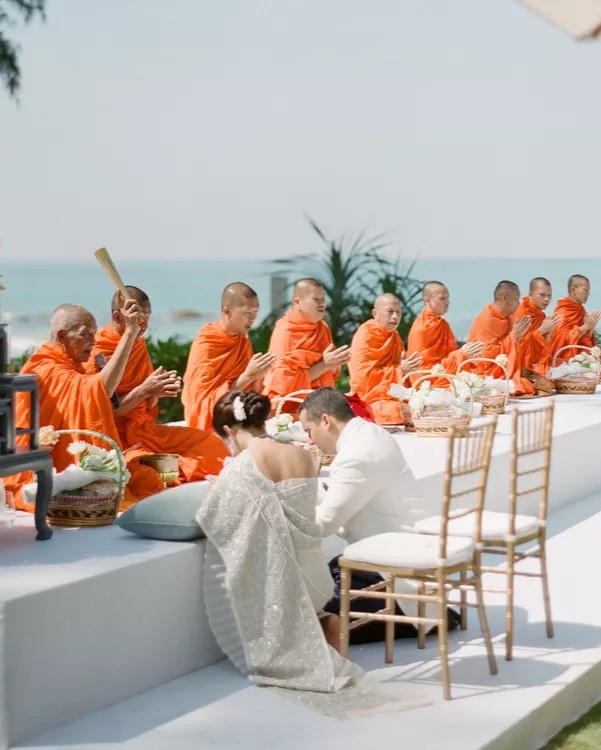
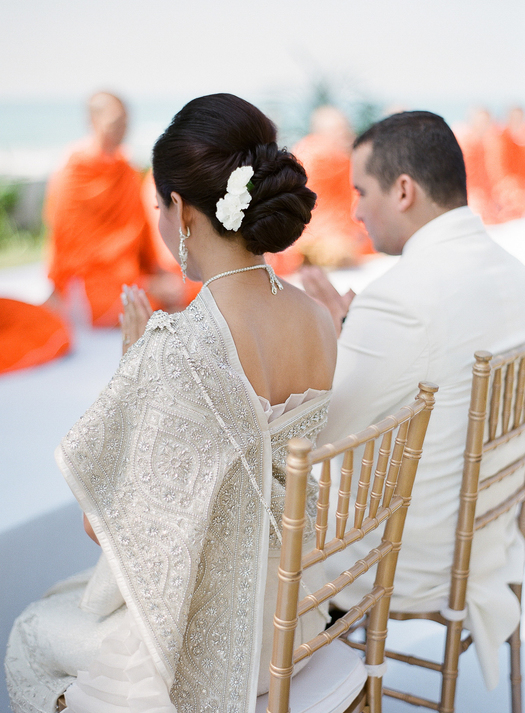
One of the most sacred elements of a Buddhist wedding is the couple’s prayer session before the monks. The bride and groom sit humbly in front of ordained monks, offering flowers, incense, or symbolic gifts. The monks chant blessings and recite scriptures to invoke peace and prosperity for the couple’s married life. This tradition not only seeks divine blessings but also aligns the union with Buddhist principles such as compassion and harmony.
8. The Tradition of Ring Exchange
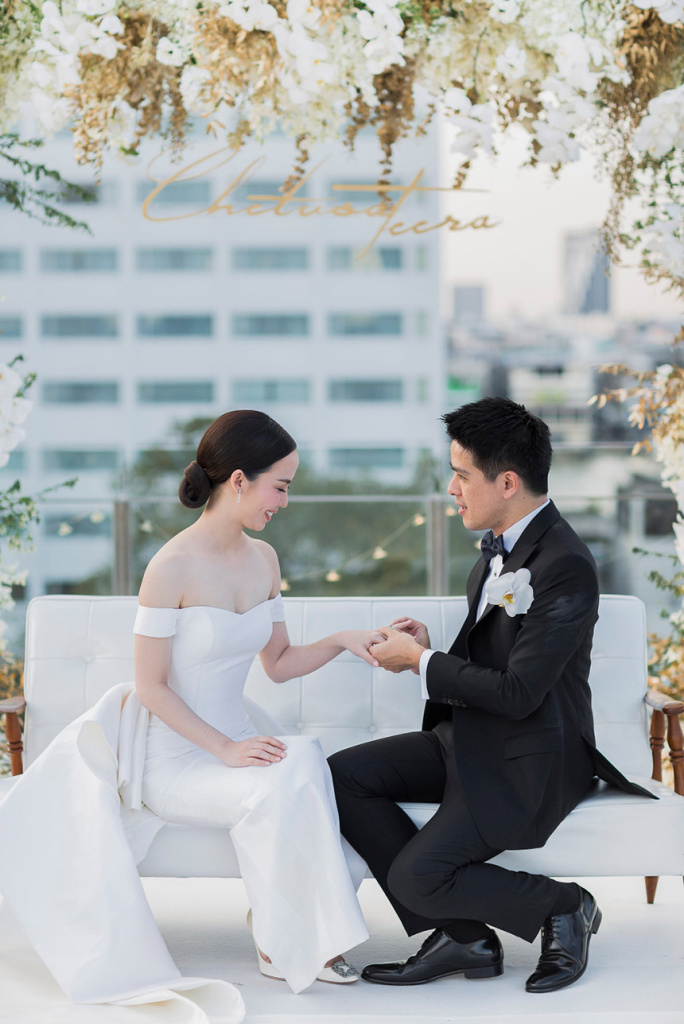
The exchange of rings is a widely recognized wedding tradition, and while it is not originally a central aspect of traditional Buddhist weddings, it has become increasingly popular in modern ceremonies, especially in countries where Buddhism intersects with other cultural and religious practices, such as Thailand, Sri Lanka, and Cambodia. In Buddhist weddings, rings symbolize unity, harmony, and mutual commitment, signifying the couple’s devotion to one another as they embark on their shared journey. Though the significance of rings in Buddhist culture is not as deeply rooted as in other religions, the practice of exchanging rings has come to represent a modern adaptation of the wedding ritual, blending ancient traditions with contemporary elements of marriage.
9. Hand Tying with Red Thread
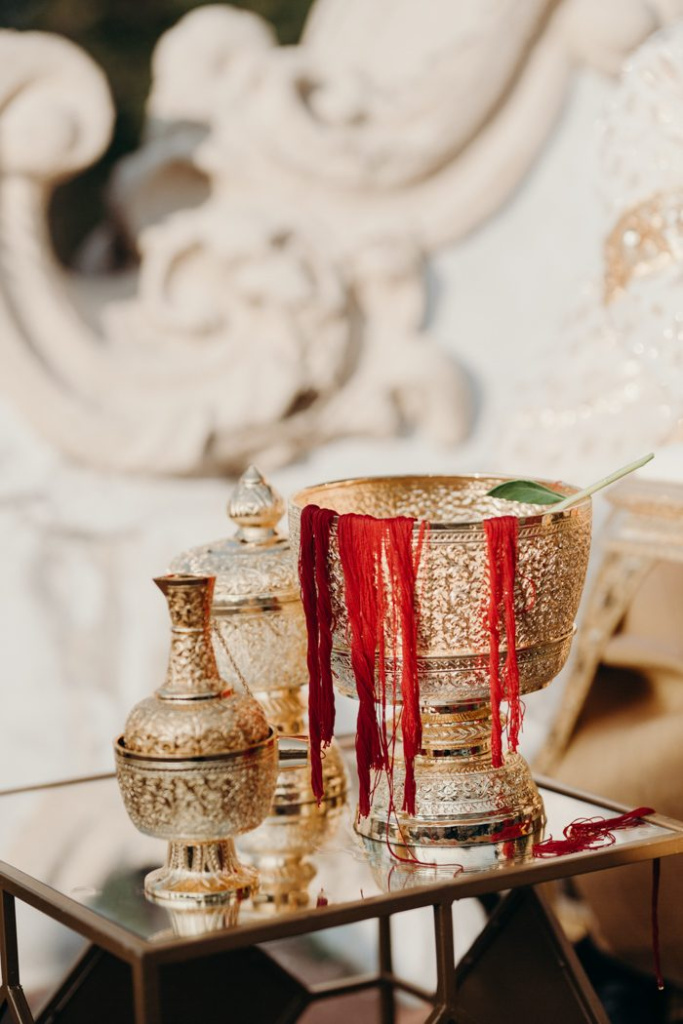

The tying of hands with a red thread is a meaningful tradition in many Buddhist weddings, symbolizing the spiritual and emotional union of the couple. During the ceremony, a monk or elder ties the couple’s hands together with a red or white thread, which is often blessed beforehand with prayers or chants. This ritual represents the bond of love, trust, and mutual support that will guide the couple through their married life. The red thread, in particular, is considered a symbol of protection, good fortune, and the connection between two souls. This tradition not only reflects the sacredness of the marital union but also emphasizes the importance of harmony and balance in building a lasting relationship.
10. Traditional Bridal Attire
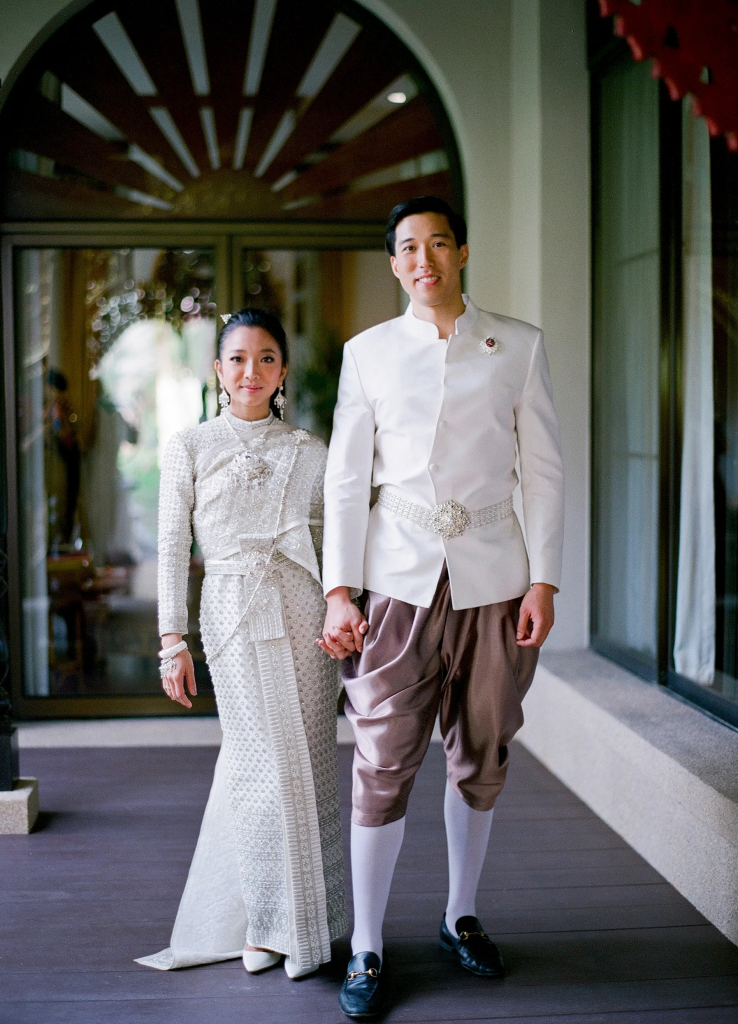
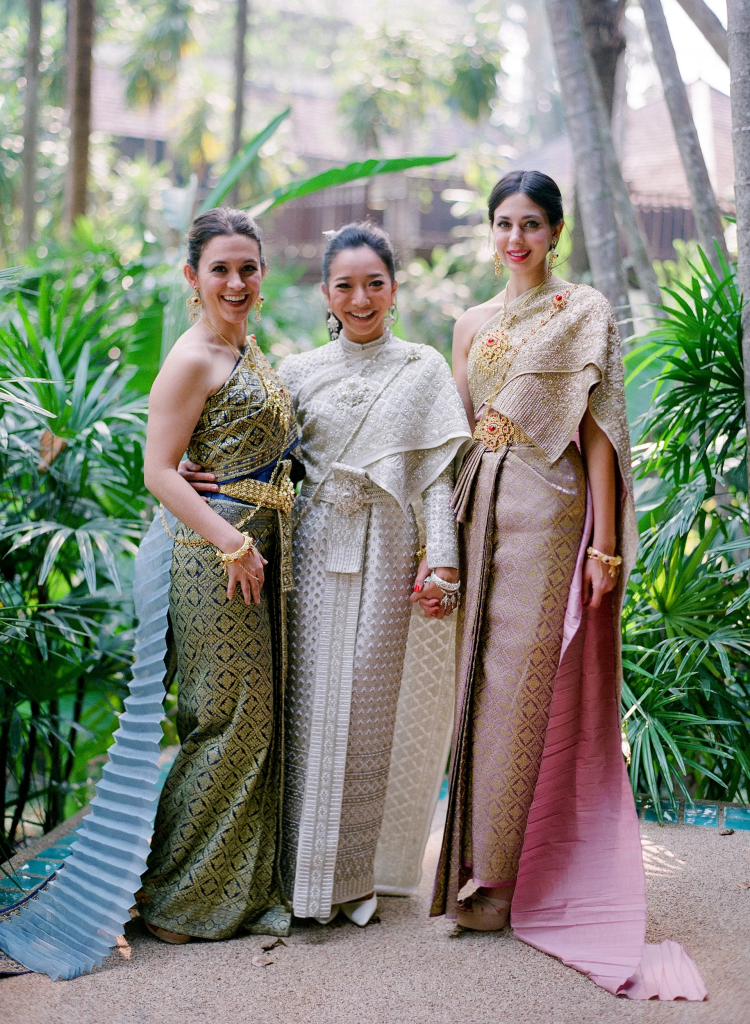
The bride’s attire in Buddhist weddings is often a masterpiece of traditional craftsmanship. The outfit is adorned with intricate patterns, gold accents, and meaningful colors. Gold, a recurring motif, symbolizes wealth, prosperity, and the sanctity of marriage. This attire not only reflects the bride’s cultural heritage but also signifies her readiness to embrace her role as a wife.
11. Blessings with Shells, Water, Beads, and Flowers
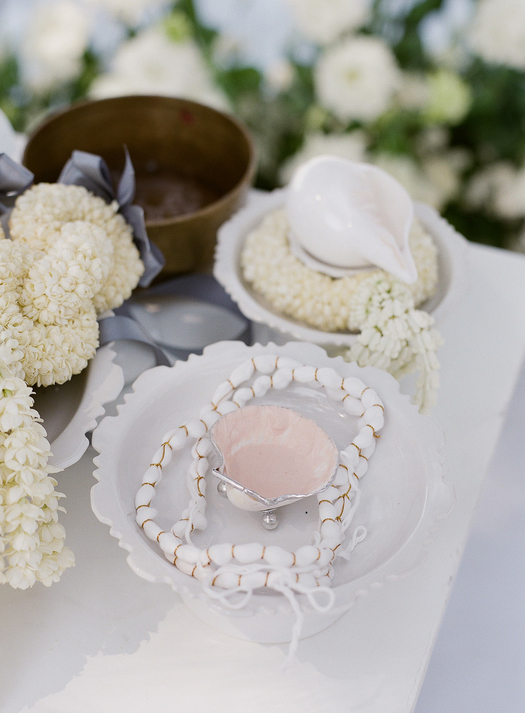
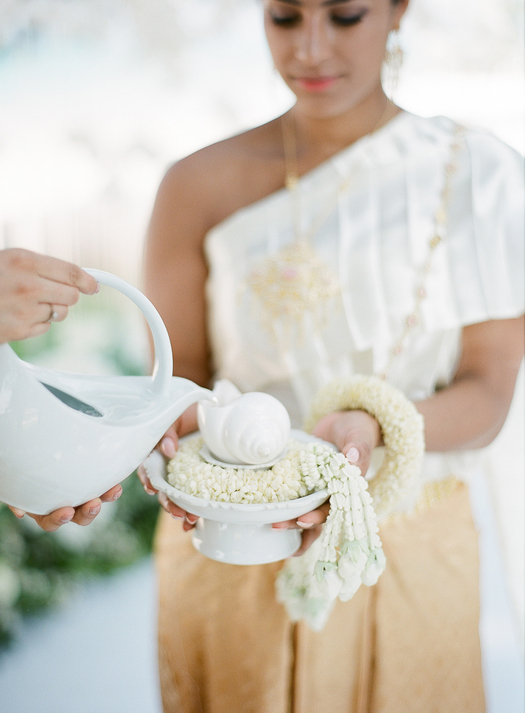
This beautiful ritual involves pouring water from a conch shell onto the hands of the couple, accompanied by the presence of symbolic items such as beads and flowers. Each element holds deep significance—water for cleansing, beads for continuity, and flowers for beauty and harmony. Together, they create a comprehensive blessing for the couple’s new journey.
12. Golden Adornments for Bridesmaids
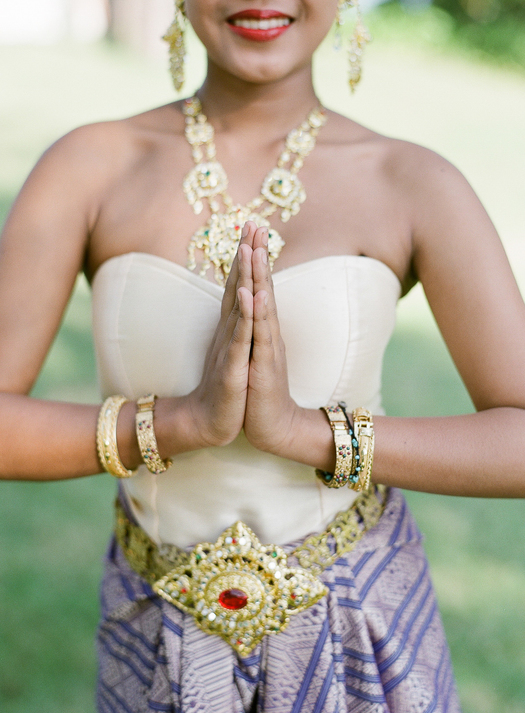
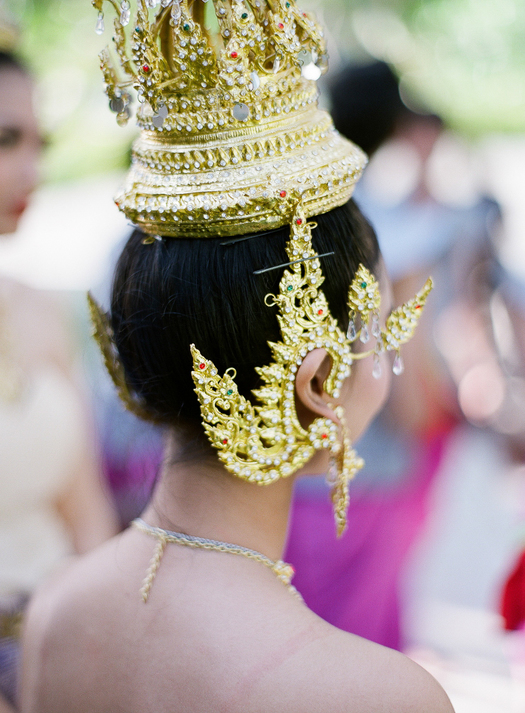
In Buddhist weddings, bridesmaids may wear outfits accented with golden elements, such as golden jewelry, headpieces, and accessories. These adornments are not only a symbol of beauty and prosperity but also represent the spiritual richness and auspiciousness of the wedding ceremony. The golden accents enhance the elegance of the bridesmaids' attire, complementing the bride’s look and adding to the overall grandeur of the event. The use of gold in these adornments reflects the cultural significance of wealth, fortune, and blessings in the couple's new life together.
13. The Blessing of the Bride and Groom's Parents
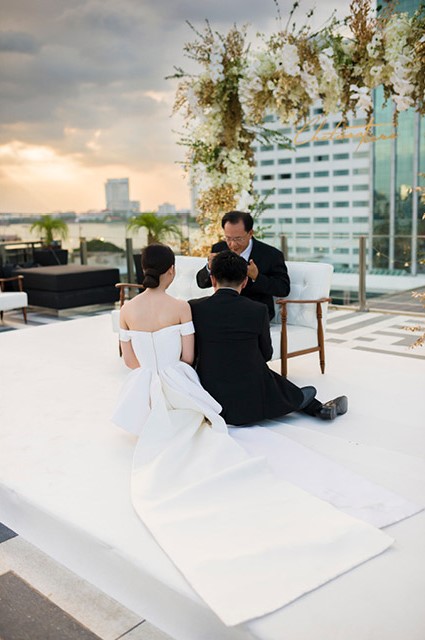
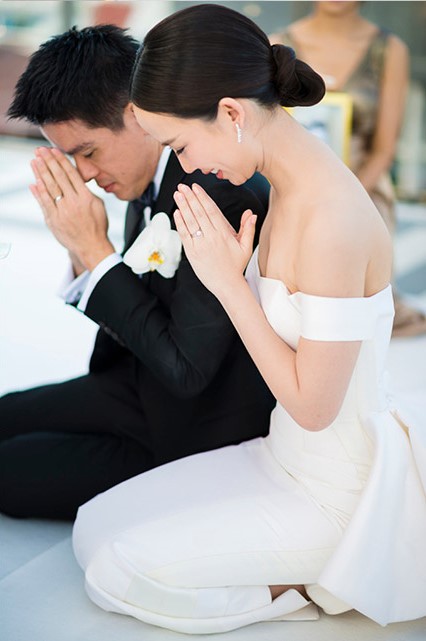
In many Buddhist wedding ceremonies, the couple’s parents are honored with blessings. This ritual recognizes the role of parents in guiding the couple through life and acknowledges their contributions to the couple’s spiritual and moral upbringing. It also reflects the Buddhist value of filial piety, which emphasizes respect and gratitude toward one’s parents and elders.
14. The Dance of Happiness
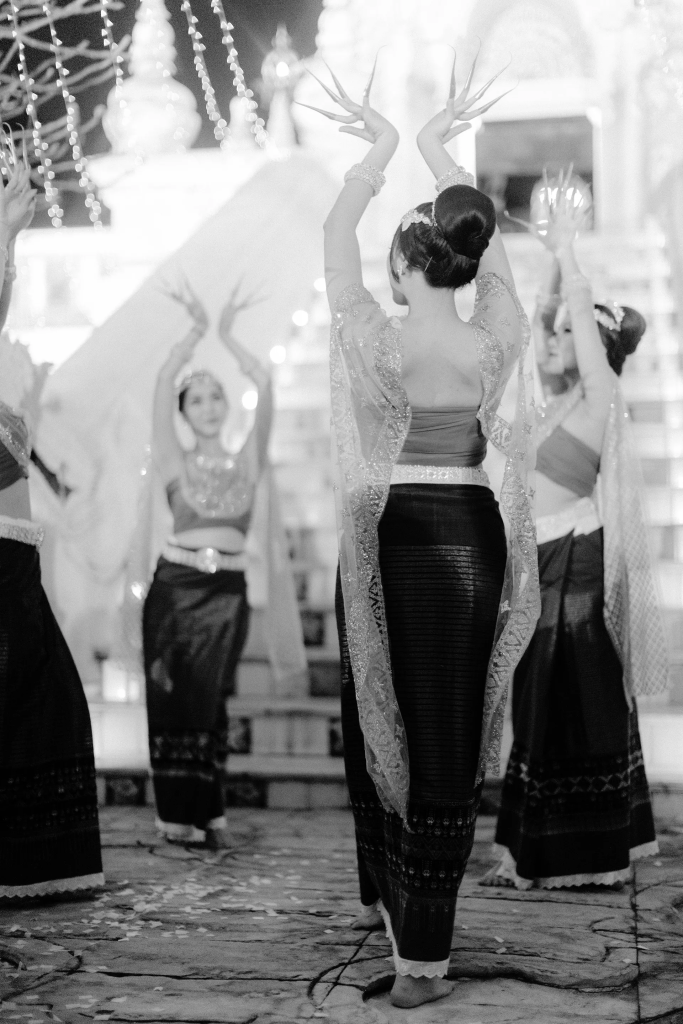
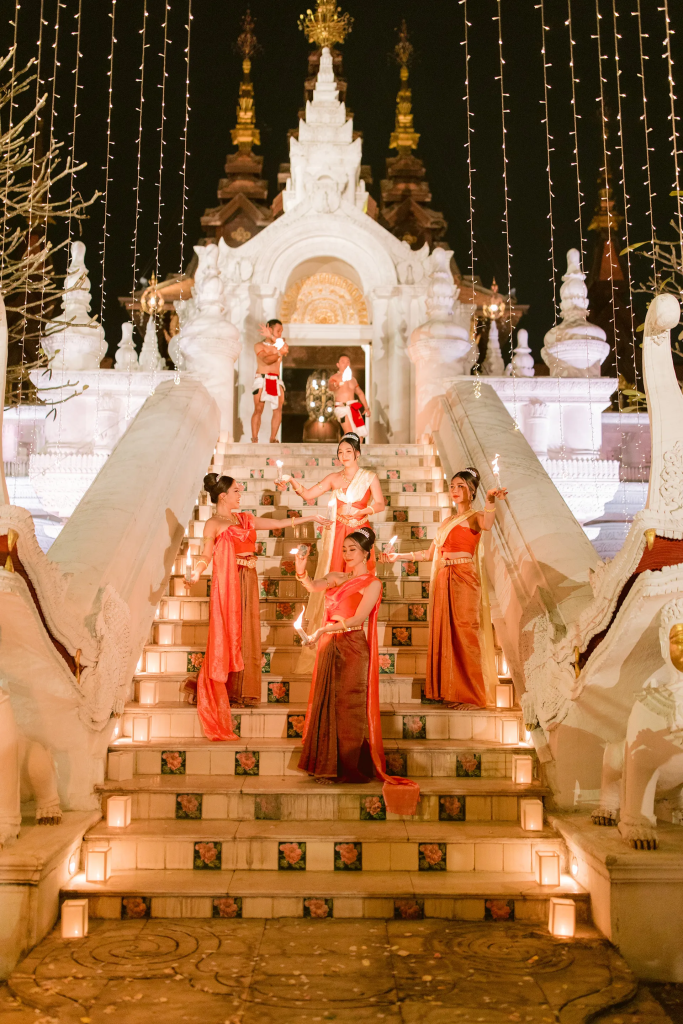
To conclude the wedding festivities, a traditional dance is performed by the couple, their families, and guests. This dance, filled with joy and celebration, signifies the collective happiness and blessings for the newlyweds. It also reflects the Buddhist value of interconnectedness and the importance of community support in building a strong marriage.
15. Offering of Gifts in Buddhist Weddings
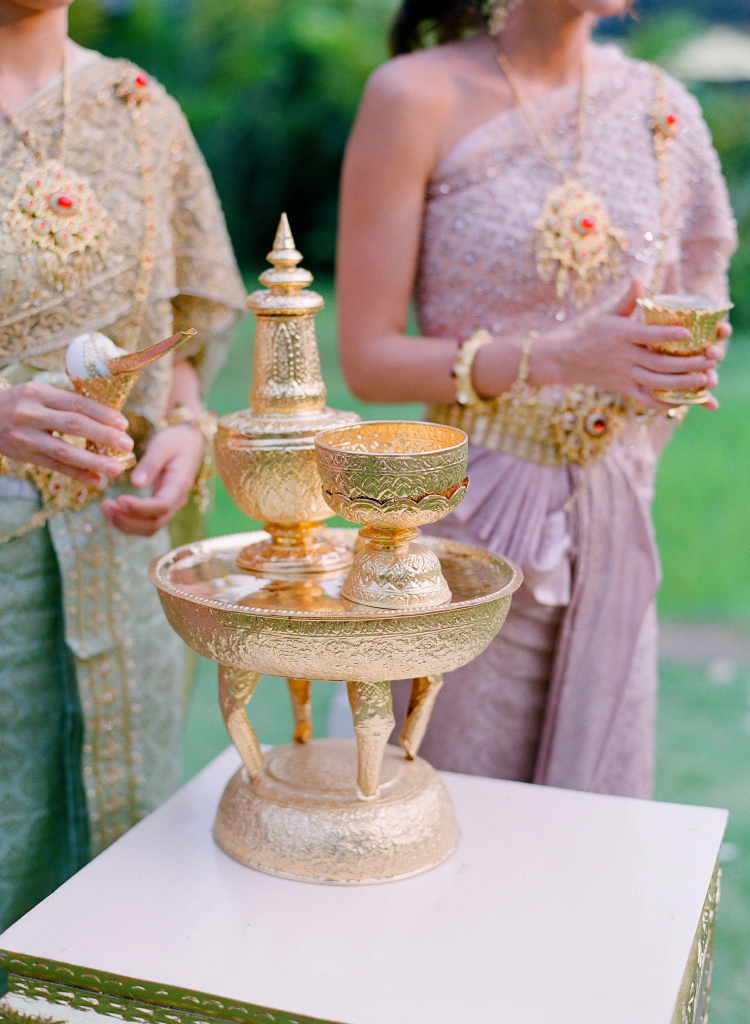
In Buddhist weddings, the offering of gifts is a significant tradition that symbolizes respect, goodwill, and the couple's commitment to each other and to their families. This practice often involves the exchange of symbolic items such as flowers, food, and sacred objects, which are presented to monks or elders during the ceremony as a gesture of gratitude and reverence. These offerings are believed to bring blessings and positive energy to the marriage, ensuring harmony and prosperity for the couple's future. The act of giving gifts is deeply rooted in the Buddhist principle of generosity (dana), emphasizing selflessness and the importance of supporting one another in life’s journey.

16. Bridesmaids' Attire
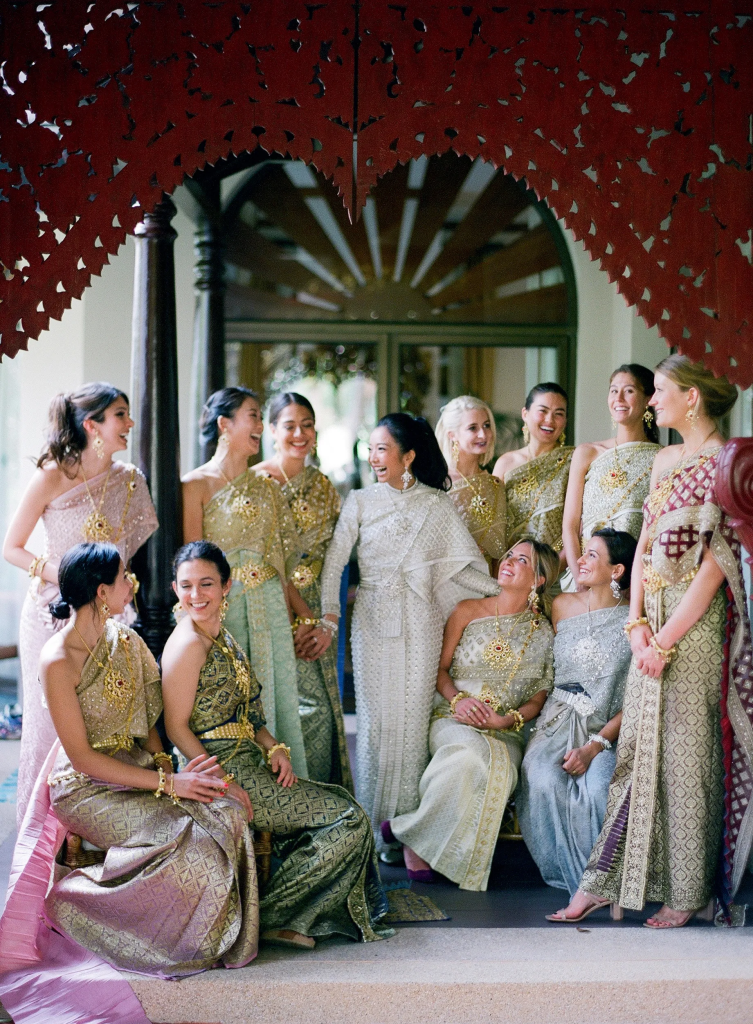
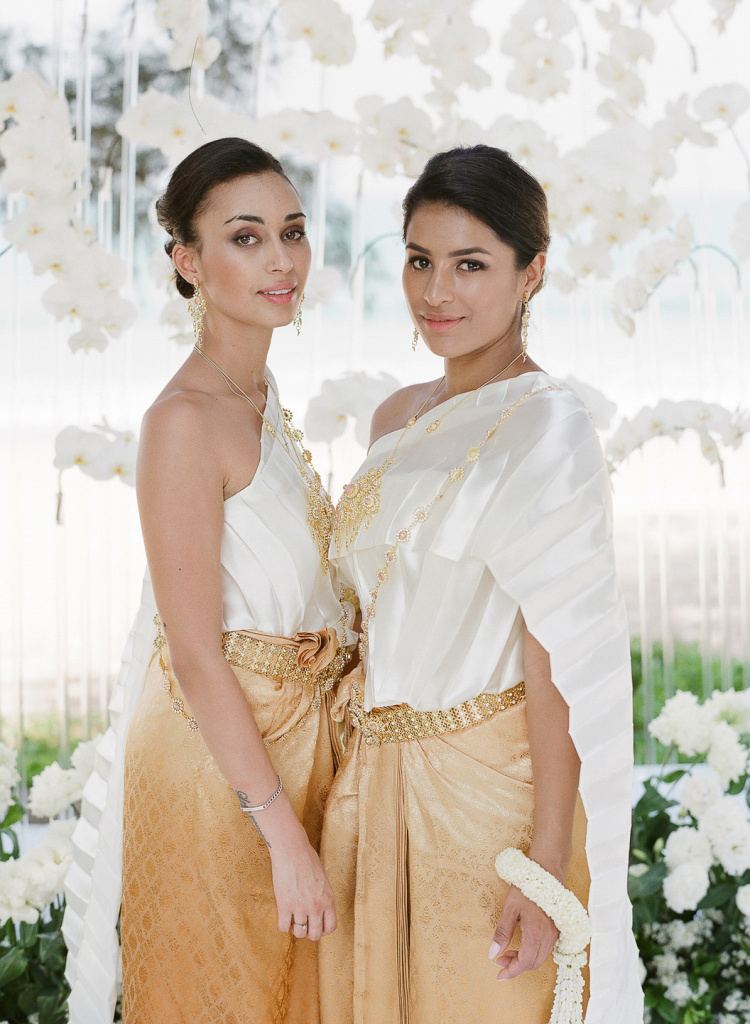
In Buddhist weddings, bridesmaids' attire is typically chosen to reflect the cultural and spiritual significance of the ceremony. While the specific style can vary depending on the region, the key focus is on modesty, simplicity, and harmony with the overall wedding theme. Bridesmaids often wear elegant dresses in soft, muted colors like pastel shades, gold, or white, symbolizing purity and peace. In some cultures, bridesmaids may wear traditional outfits that align with local customs, such as silk dresses or garments inspired by Buddhist heritage. The attire is meant to complement the bride’s outfit while maintaining a respectful tone for the spiritual nature of the celebration. Overall, the bridesmaids' attire is designed to highlight the sacredness of the wedding ceremony while ensuring the focus remains on the couple and their union.
Buddhist wedding traditions are deeply rooted in spirituality and cultural heritage, emphasizing values such as love, respect, and harmony. Each ritual and symbol carries profound meaning, offering the couple a foundation for a mindful and compassionate life together. Whether through prayers, blessings, or celebratory dances, these traditions unite the spiritual and the cultural, making Buddhist weddings truly unique and unforgettable.










